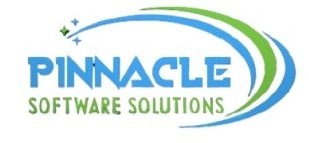Pinnacle Software Solutions can provide a range of tailored solutions to help the insurance industry enhance efficiency, improve customer experience, and ensure regulatory compliance. Here are key areas and corresponding solutions:
1. Underwriting and Risk Assessment
- AI and Machine Learning Models: Develop predictive models to assess risk accurately.
- Data Analytics: Use big data analytics to analyze vast amounts of data from multiple sources to improve risk assessment.
2. Claims Processing
- Claims Management: Implement systems that streamline claims processing, reducing manual intervention and improving accuracy.
- Fraud Detection: Used to identify suspicious claims and detect fraud early in the claims process.
3. Customer Relationship Management (CRM)
- Personalized Services: Develop CRM systems that offer personalized insurance products and services based on customer data and preferences.
- 360-Degree Customer View: Implement solutions that provide a comprehensive view of customer interactions and policies.
4. Policy Management
- Policy Administration Systems: Create systems that manage the entire policy lifecycle from issuance to renewal and cancellation.
- Document Management: Implement solutions for managing policy documents, ensuring easy access and compliance with regulations.
5. Regulatory Compliance
- Compliance Management Tools: Develop software that automates compliance with insurance regulations, including reporting and auditing.
- Regulatory Reporting: Implement systems that generate accurate and timely reports for regulatory bodies.
6. Insurance Analytics
- Business Intelligence Platforms: Create dashboards and reporting tools to analyze performance metrics and operational data.
- Customer Insights: Use analytics to gain insights into customer behavior and preferences, improving product offerings and marketing strategies.
7. Cybersecurity Solutions
- Data Protection: Provide robust encryption and data protection solutions to secure sensitive customer and business data.
- Threat Detection and Response: Use AI and machine learning to detect and respond to cybersecurity threats in real-time.
8. Mobile and Online Platforms
- Mobile Insurance Apps: Develop secure, user-friendly mobile applications that allow customers to manage their policies, file claims, and access services.
- Online Portals: Create web-based platforms for customers to access their insurance information, pay premiums, and interact with support.
9. Robotic Process Automation (RPA)
- Administrative Automation: Automate repetitive tasks such as data entry, billing, and customer communications to reduce errors and improve efficiency.
- Workflow Optimization: Develop solutions that optimize business workflows, improving speed and accuracy.
10. Customer Support and Service
- AI Chatbots: Deploy AI-driven chatbots to handle routine customer inquiries, provide policy information, and assist with claims.
- Omnichannel Support: Implement systems that ensure consistent customer support across various channels, including phone, email, and social media.
11. Product Development
- Market Analysis Tools: Use analytics to identify market trends and customer needs, aiding in the development of new insurance products.
- Pricing Optimization: Develop models that optimize pricing strategies based on risk assessment and market conditions.
12. Reinsurance Solutions
- Reinsurance Management Systems: Implement systems that manage reinsurance contracts, ceded premiums, and claims.
- Risk Sharing Analytics: Use data analytics to optimize risk-sharing arrangements and improve financial stability.
13. Claims Forecasting
- Predictive Analytics: Use historical data and predictive models to forecast future claims, helping in financial planning and reserve management.
- Scenario Analysis: Develop tools that simulate various scenarios to evaluate the impact of different risk factors on claims.
Implementation Strategy
1. Needs Assessment
- Conduct thorough assessments to understand the unique needs and challenges of each insurance provider.
- Tailor solutions to address these specific requirements.
2. Customization and Integration
- Customize software solutions to fit the existing infrastructure and workflows of insurance companies.
- Ensure seamless integration with current systems to avoid disruptions.
3. Data Management
- Implement strong data governance practices to ensure data quality and security.
- Ensure compliance with data protection regulations.
4. Training and Support
- Provide comprehensive training to insurance staff to ensure they can effectively use the new solutions.
- Offer ongoing support and maintenance to ensure optimal performance.
5. Continuous Improvement
- Regularly update and enhance solutions to keep up with technological advancements and regulatory changes.
- Gather feedback from users to continuously improve the software.
By offering these tailored solutions, Pinnacle Software Solutions can help insurance companies improve operational efficiency, enhance customer satisfaction, and maintain regulatory compliance, ultimately driving business growth and success.
